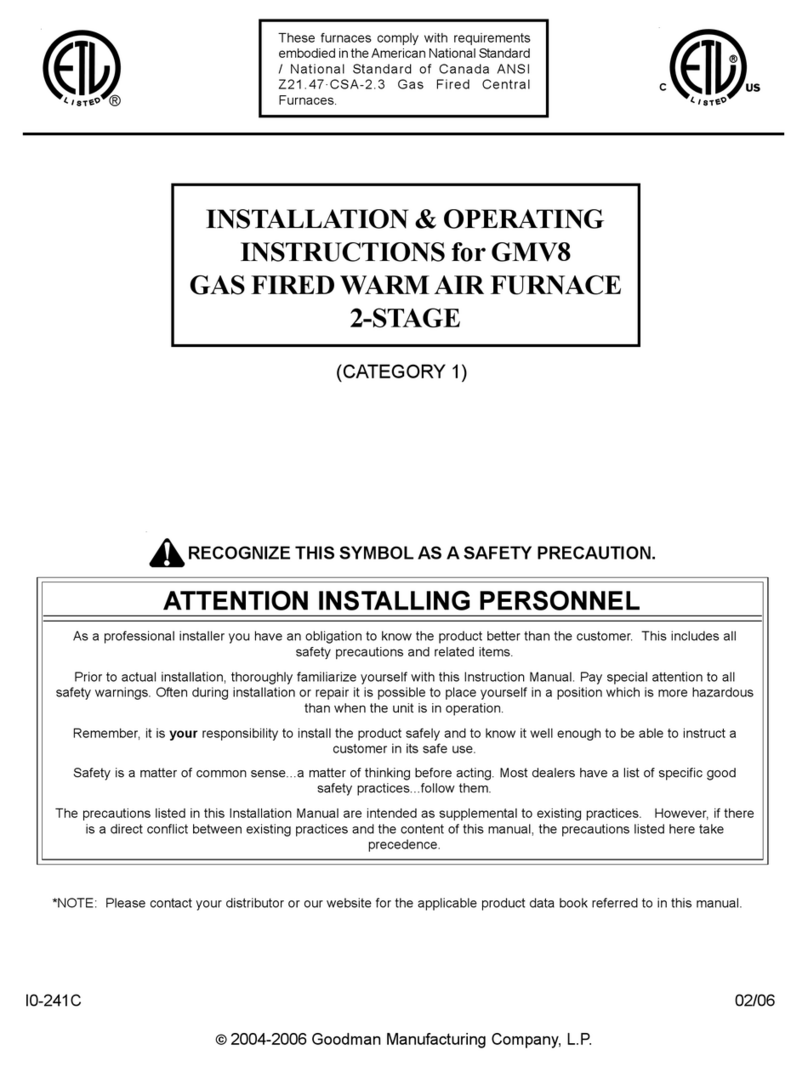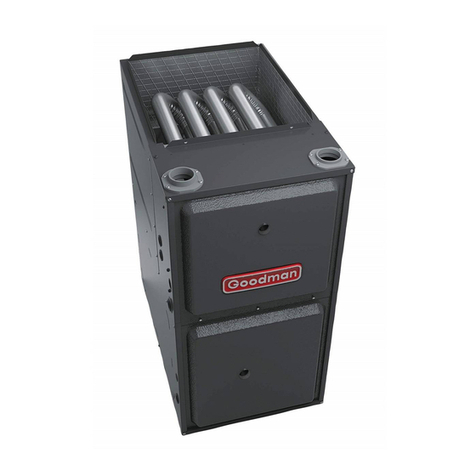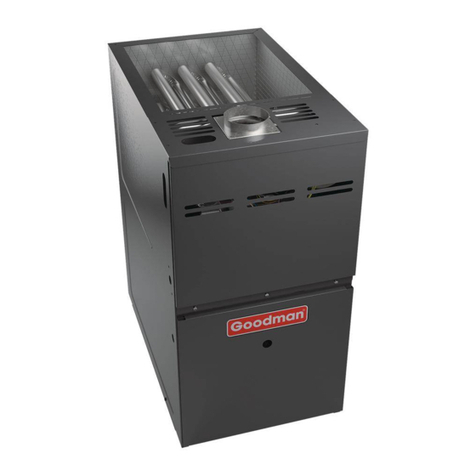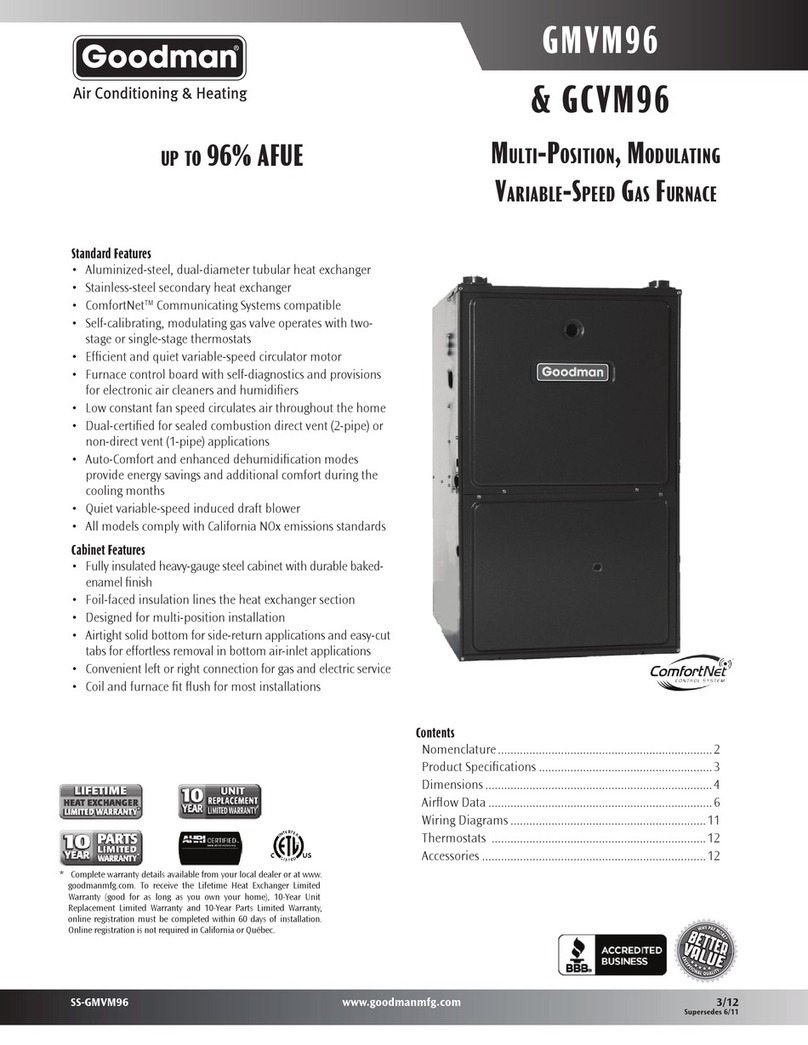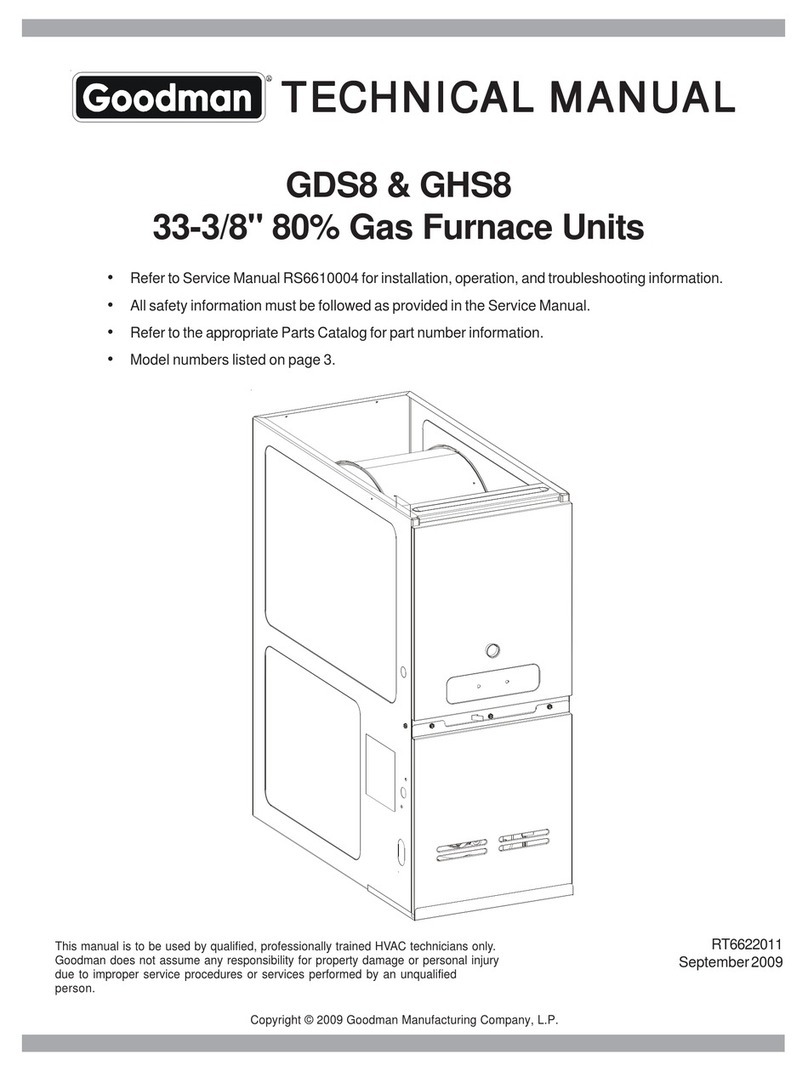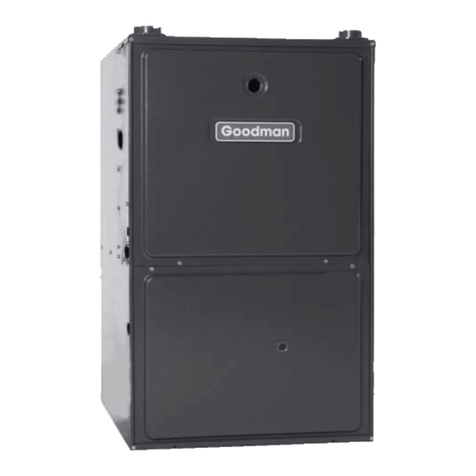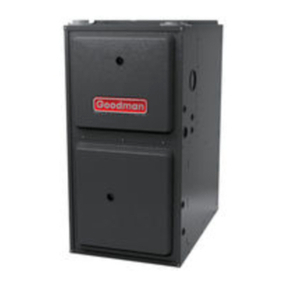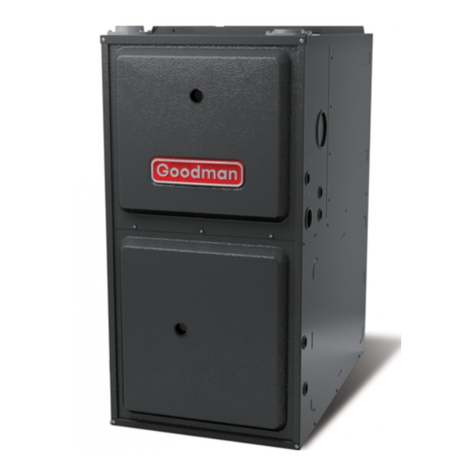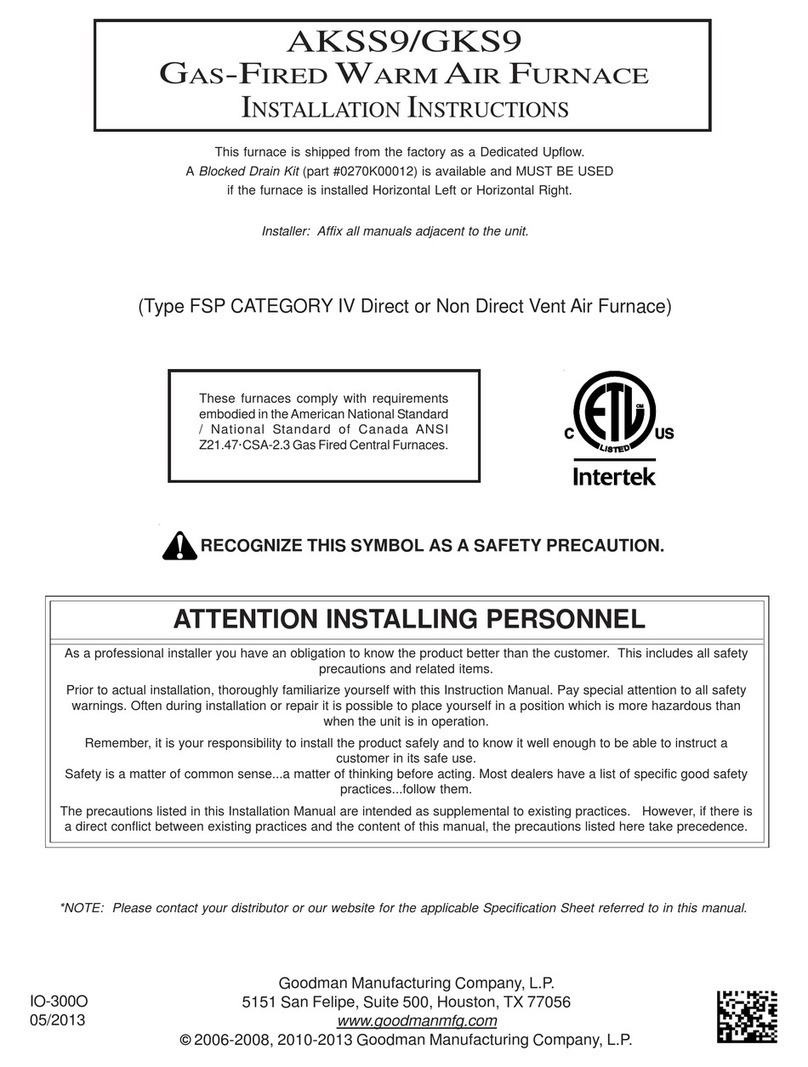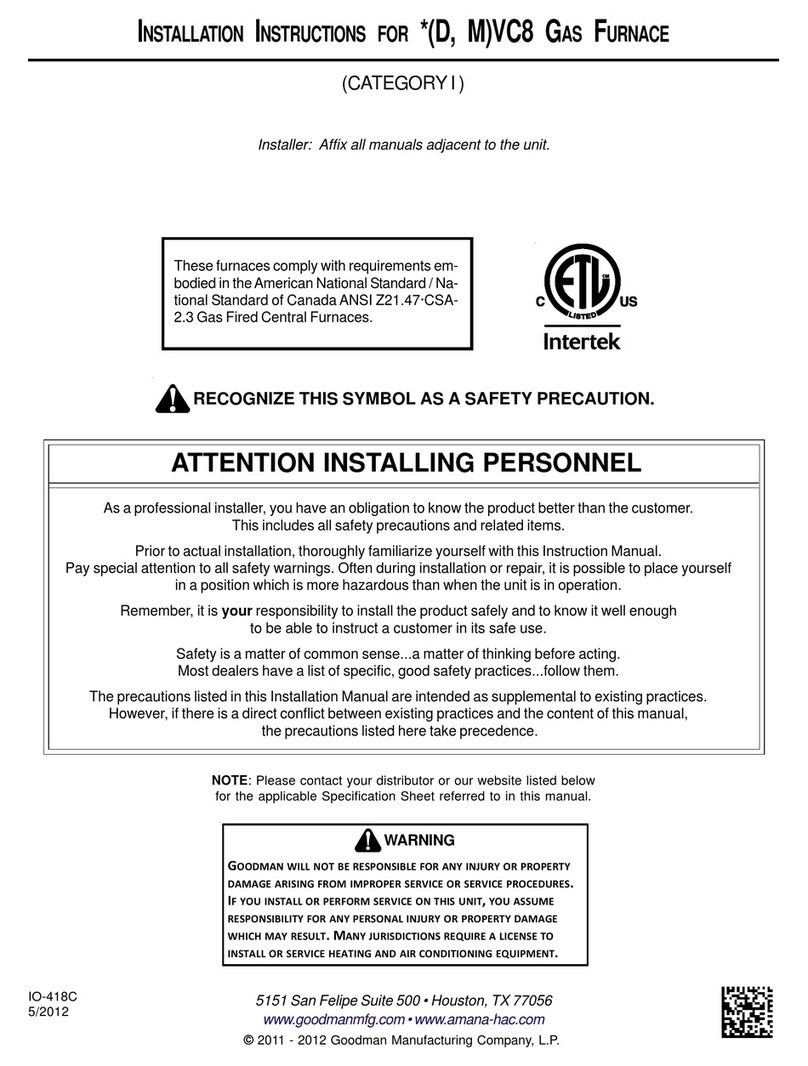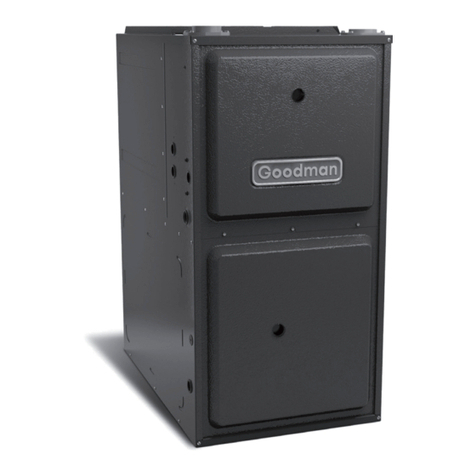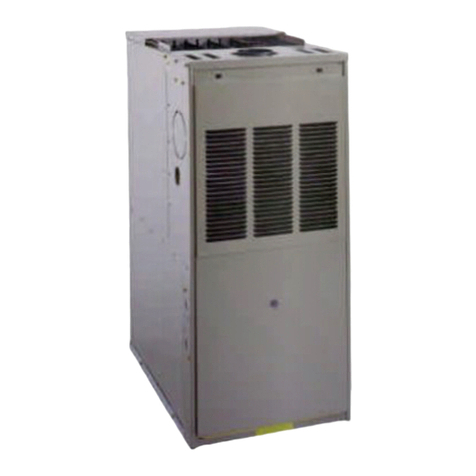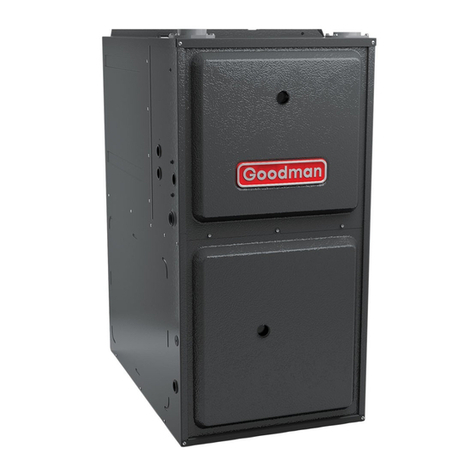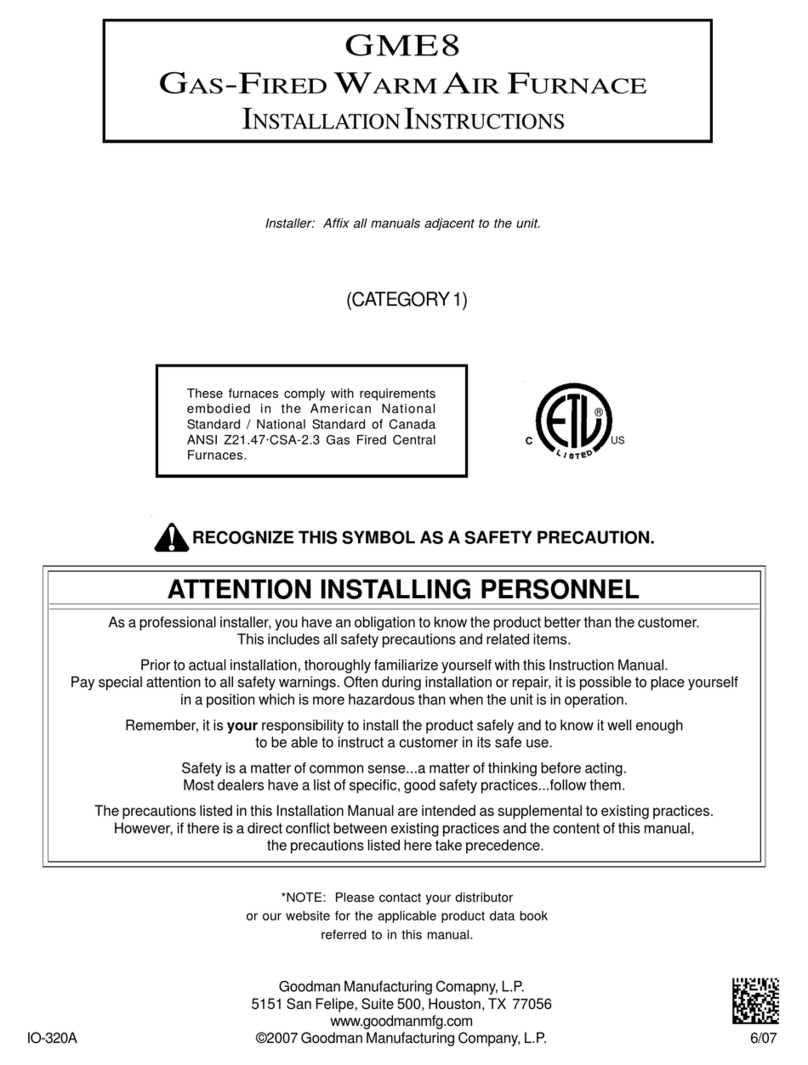
SYSTEM OPERATION
10
Please adhere to the following warnings and cautions
when installing, adjusting, altering, servicing, or operating
the furnace.
-
-
-
Discharge body’s static electricity before touching
-
cal components.
Use the following precautions during furnace installation and
servicing to protect the integrated control module from dam-
age. By putting the furnace, the control, and the person at
the same electrostatic potential, these steps will help avoid
-
charge. This procedure is applicable to both installed and
uninstalled (ungrounded) furnaces.
1. Disconnect all power to the furnace. Do not touch the
integrated control module or any wire connected to
the control prior to discharging your body’s electro-
static charge to ground.
2. Firmly touch a clean, unpainted, metal surface of the
furnace near the control. Any tools held in a person’s
hand during grounding will be discharged.
3. Service integrated control module or connecting wir-
ing following the discharge process in Step 2. Use
caution not to recharge your body with static electrici-
ungrounded objects, etc.). If you come in contact with
an ungrounded object, repeat Step 2 before touching
control or wires.
4. Discharge any static electricity from your body to
ground before removing a new control from its con-
tainer. Follow Steps 1 through 3 if installing the control
on a furnace. Return any old or new controls to their
containers before touching any ungrounded object.
This product is designed for use as a residential home gas
furnace. It is not
home, trailer, or recreational vehicle applications.
This furnace can be used in the following non-industrial
commercial applications:
In such applications, the furnace
must be installed with the installation instructions.
Goodman & Amana®-
ances and are appropriate for use with natural or propane
gas. (If using propane gas, a propane conversion kit
is required).
-
To ensure proper installation, operation and servicing, thor-
oughly read the installation and service manuals for specif-
ics pertaining to the installation, servicing and application of
this product.
To ensure proper furnace operation, install, operate, main-
tain and service the furnace in accordance with the instal-
lation, operation and service instructions, all local building
codes and ordinances. In their absence, follow the latest edi-
tion of the National Fuel Gas Code (NFPA 54/ANSI Z223.1),
and/or CAN/CGA B149 Installation Codes, local plumbing or
waste water codes, and other applicable codes.
The rated heating capacity of the furnace should be greater
than or equal to the total heat loss of the area to be heat-
ed. The total heat loss should be calculated by an approved
-
tractors of America.
